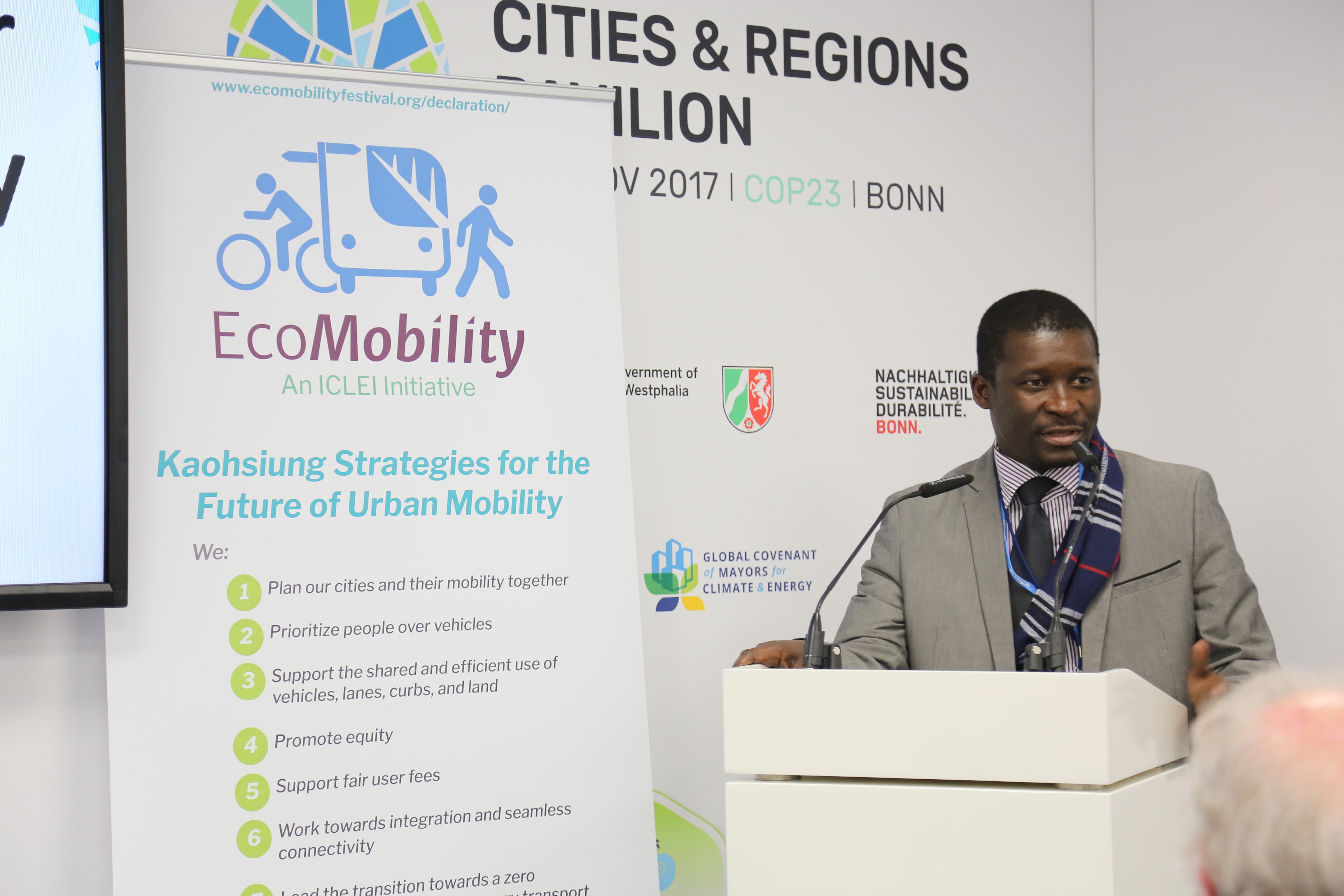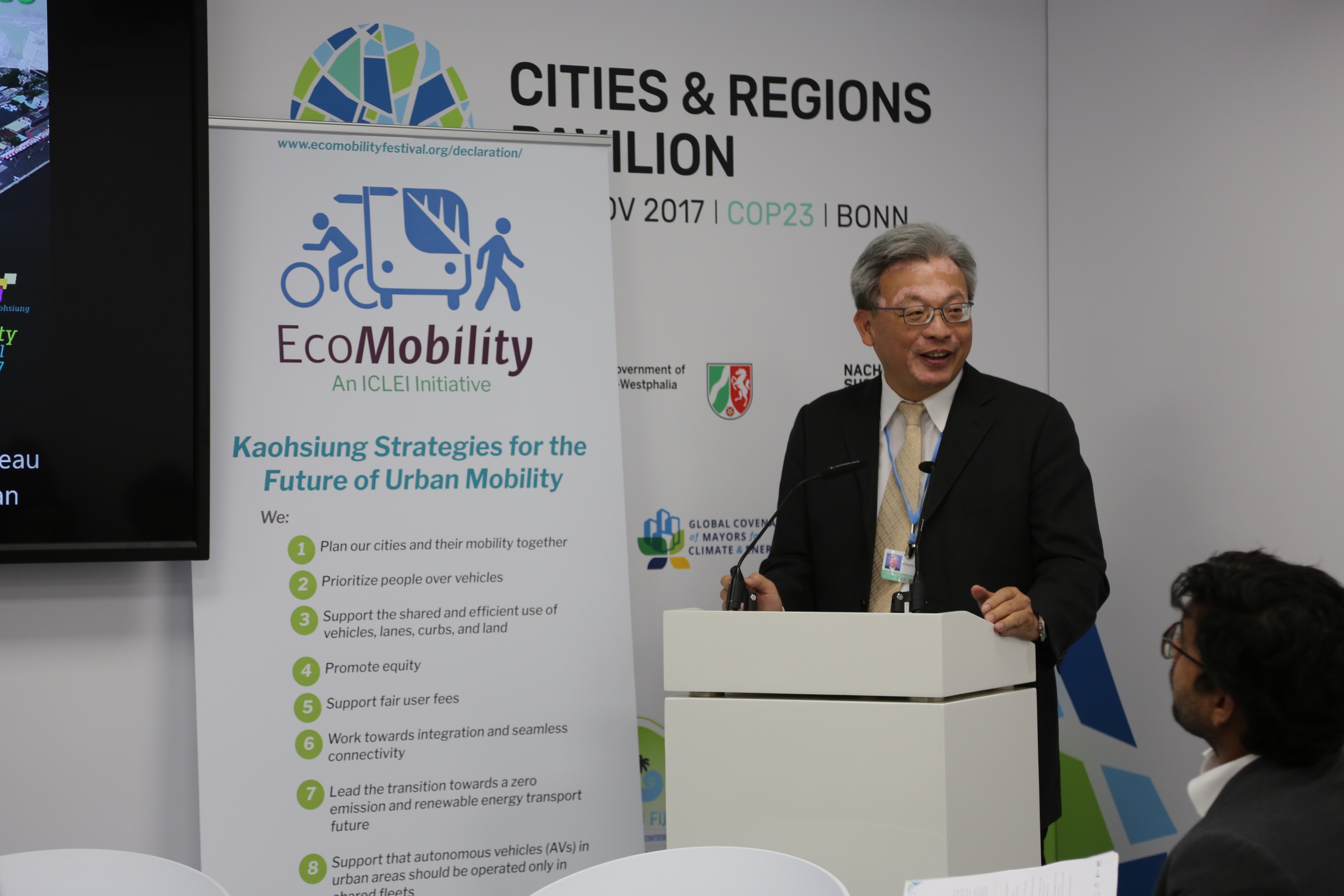Sustainable transport is key to the achievement of the Paris Agreement and has been mentioned in 75 percent of Nationally Determined Contributions (NDCs). Transport is also critical to the Sustainable Development Goals (SDGs) as urban mobility not only cuts emissions but improves quality of life in urban areas, by reducing congestion and pollution and providing more equitable, accessible options for mobility.
The EcoMobility World Festival and Congress, which took place in Kaohsiung in October 2017, provided an example of how the transition towards sustainable urban mobility can look. The City of Kaohsiung has shown its commitment to building a sustainable mobility culture through several initiatives, including improving pedestrian environments, expanding cycle paths and a public bike sharing system, adding a light rail system to the public transport network in the city, replacing city busses with electric busses and investing in environmental education and public participation.
The key outcome of the EcoMobility World Congress was the Kaohsiung Strategies for the Future of Urban Mobility, a document that outlines twelve key principles of urban mobility and provides guidelines for local leaders to implement these principles in their cities and communities. These strategies prioritize people over vehicles by encouraging active mobility such as walking and cycling. They also call for integrated systems where shared mobility is at the center of connected, carbon free transport systems for passengers and freight.
The Kaohsiung Strategies can be a guide for cities in developing sustainable urban transport systems and reducing emissions. For example, the City of Turku, Finland has a target to be carbon neutral by 2040, and has already cut emissions by one-third from 1990 levels. Currently, the transport sector accounts for one-fifth of city emissions. However, Turku has implemented a plan to rapidly cut energy emissions and over the course of the next few years, as this goes into effect, it is expected that transport will increase to represent roughly half of total emissions. Even as vehicles have become cleaner, the demand for transport has increased and more kilometers are traveled, keeping emissions at a flatline. If the city is to achieve its goal of carbon neutrality, they must find a way to address the transport sector.
Turku is already taking some key actions such as aiming to improve winter walking and cycling conditions to make the city bikable and walkable year-round. However, they are looking to work with transport experts to operationalize key principles from the Kaohsiung Strategies to further develop and implement a sustainable urban mobility plan.
The Kaohsiung Strategies can also provide guiding ideas in Quelimane, Mozambique. Mayor Manuel de Aruajo made the point that many of the most common strategies to implement sustainable transport systems are focused on transitioning from industrially developed car dependent cities and communities to a cleaner, more livable and sustainable mobility paradigm. However, Mayor Aruajo made it clear that his city needs a different approach. He shared that bicycles are a key form of transport: “I am not here saying we are using bicycles because we are climate change aware. But it is an opportunity because we can avoid the same development path that most countries have followed.” The mayor expressed that many cities in early stages of development are looking to establish accessible, clean, sustainable and equitable transport systems and are willing to shape a new development path for mobility but need support to develop the technology, knowledge and capacity to do so.
——————–
This piece was originally published on ICLEI’s blog CityTalk and is being republished with permission from ICLEI – Local Governments for Sustainability.




